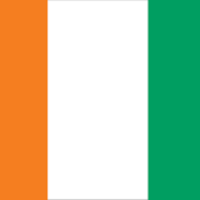Ivory Coast’s production of fiber, fabric, and clothing is vital to the country’s economy as well as the larger West African economy, and the interdependence of its neighbors greatly impacts it. The manufacture of clothing and fabrics in Ivory Coast originates in traditional textile craftsmanship and is becoming a major player in the West African fashion industry. The country is expected to produce 1.10 million 480 lb bales of cotton and export 1.15 million 480 lb bales in the upcoming season (Fibre2Fashion, 2021). Both contemporary manufacturing techniques and traditional handwoven materials are at the heart of the nation’s textile industry. There is Korhogo cloth, “The cloth is made of hand woven and hand spun cotton (Peggy, 2024). Important components include Baoulé textiles, which are produced in local communities. The “Kita” or also called “kente” is the traditional material that is worked on the looms (Alonso, 2023). Senufo weavers use cotton in locations like Waraniéné to produce durable and significant textiles for both everyday usage and cultural occasions.
Moreover, the regional integration in textile and apparel production is driven by the shared objective of increasing value-added processing within Africa, reducing reliance on imports, and stimulating employment. West African countries have worked collectively to boost local processing capabilities, with Ivory Coast investing in textile manufacturing facilities that process cotton domestically and produce apparel for export (African Development Bank, 2019). The region’s apparel market benefits from such interdependence, as improved intra-African trade provides opportunities to tap into diverse consumer bases and achieve economies of scale. As African textiles and apparel industries grow, initiatives like the West African Competitiveness Program promote collaboration across borders to bolster quality and production capacity, strengthening the sector as a key pillar of West Africa’s industrialization agenda (O’Toole & Luke, 2019). Not only does it create a better market environment but it increases the economy, making it a win-win.




